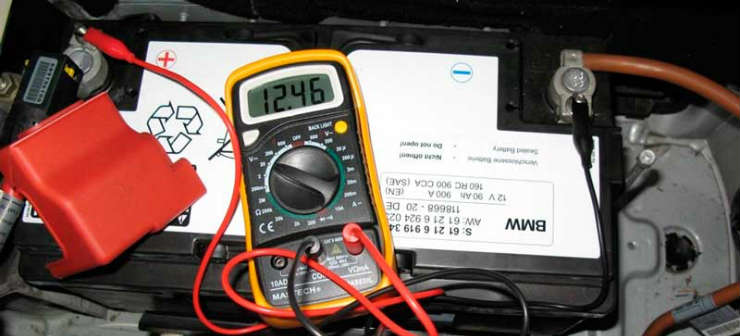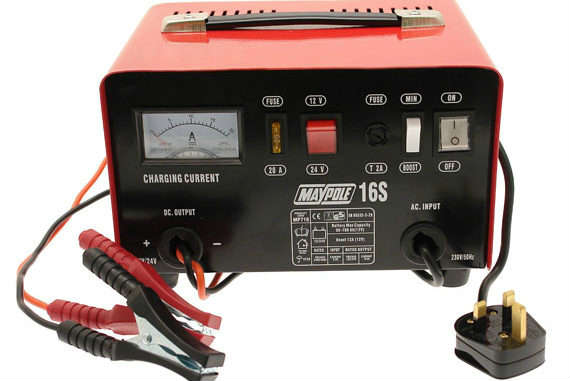How much do you need to charge the car battery charger
In the practice of motorists, two methods of charging the battery (AKB) are used - with constancy of the charging current and with the constancy of the charging voltage. Each of the methods used are characterized by its drawbacks and advantages, and the charging time is determined by the set of factors. Before starting to charge a new, just purchased the battery, or removed from the vehicle, it must be carefully prepared for charging.
In a new battery, it is necessary to pour up to the required level of electrolyte regulated density. At the battery removed from the vehicle, it is necessary to clean the oxidized terminals from the mud. The housing of the non-serving battery should be wiped with a rag moisturized in a calcined solution (better) or drinking soda, or diluted by ammonic alcohol.
If the battery is served (the battery banks are equipped with corks for fill and topping electrolyte), then it is necessary to further thoroughly clean the top cover (with screwed plugs) so that when unscrewing the plugs in the electrolyte did not hit random dirt. This will certainly lead to the battery output. After cleaning, you can turn the plugs and measure the level and density of the electrolyte.
If necessary, add electrolyte or distilled water to the required level. The choice between the plot of electrolyte or water is carried out on the basis of the measured density of the electrolyte in the battery. After the liquid is tested, it is necessary to leave the plugs open so that the battery "breathe" in the charging process and did not break the gases released during charging. Also, through the filling holes, it will be possible to periodically check the temperature of the electrolyte to avoid its overheating and boiling.
Next, connect to the withdrawal contacts of the AKB charger (memory) with indispensable observance of polarity ("plus" and "minus"). At the same time, at first connect to the terminals of the Battery "Crocodiles" of the charger wires, then the power cord is connected to the power grid, and only after that includes the memory. This is done to eliminate the ignition of the oxygen-hydrogen mixture released from the battery or its explosion when the crocodiles is configured.
With the same purpose, the activation order of the battery is reversed: first turns off, and only then detachable "crocodiles". The oxygen-hydrogen mixture is formed as a result of the compound of hydrogen allocated during operation with air oxygen.
Charging battery constant
Under the constant current in the case under consideration it is understood as the constancy of the value of the charging current. This method is the most common of two applications. The electrolyte temperature in the battery prepared for charging should not reach 35 ° C. The charging current of the new or discharged battery in amps is set equal to 10% of its capacity in amps-hours (example: when capacity of 60 Ah is set to 6 A). This current will be either automatically maintained, or it will have to be adjusted by the switch on the panel or by the retake.
When charging, the voltage on the output terminals of the battery should be controlled, it will grow in charge of charging, and to achieve 2.4 V values \u200b\u200bto each bank (i.e. 14.4 V throughout the battery) Charging current should be reduced twice for a new battery And twice-tripled for a used in use. With this current, the battery is charged up to the abundant gas formation in all battery banks. Two-stage charging allows you to accelerate the charging of the battery and reduce the intensity of the gas evolution destroying plate.

If the battery is discharged slightly, it can be completely charged in a single-stage mode current equal to 10% of the battery capacity. A sign of charging completion is also abundant gas emission. There are additional signs of completion of the charge:
- unchanged electrolyte density for 3 hours;
- achievements on the terminals of the AKB value of 2.5-2.7 V per section (or 15.0-16.2 V per battery as a whole) and the invariance of this voltage is also within 3 hours.
To control the charging process, it is necessary to check the density, level and temperature of the electrolyte in battery banks every 2-3 hours. Temperature should not be increased above 45 ° C. If the boundary temperature value is exceeded, either stop the charge for the time and wait for the electrolyte temperature dropping to 30-35 ° C, and then continue charging at the same current, or reduce charging current by 2 times.
Based on the state of the new uncharged battery, its charge can last until 20-25 hours. The time of charge managed to work the battery depends on the degree of destruction of its plates, the operating time and degree of discharge, and can reach 14-16 hours or more with a deep discharge of the battery.
Charging the battery constant voltage
In the constancy mode of the charging voltage, it is recommended to charge maintenance-free batteries. For this, the voltage on the output terminals of the battery should not exceed 14.4 V, and the charge is completed when the charge current decreases below 0.2 A. Charging the battery in this mode requires a memory with maintaining the constancy of the output voltage of 13.8-14.4 V.
In this mode, the charge current is not regulated, and the memory is established depending on the discharge of the battery automatically (as well as the electrolyte temperature, etc.). With the constancy of the charging voltage, 13.8-14.4 in the battery can be charged in any state without the risk of excessive gas dividing and overheating of the electrolyte. Even in the case of a fully discharged battery, the charge current does not exceed the value of its nominal container.

At nonnegative electrolyte temperature, the battery for the first hour of charging is charged to 50-60% of its capacity, for the second hour another 15-20%, and for the third hour by only 6-8%. Total for 4-5 hours of charging, the battery is charged to 90-95% of the total capacity, although the charging time may be different. Signs of charge completion is a decrease in charging current below 0.2 A.
This method does not allow to charge the battery to 100% of its capacity, since for this it is necessary to increase the voltage at the conclusions of the battery (and, accordingly, the output voltage of the memory) to 16.2 A. This method has the following advantages:
- the battery is charging faster than when charging with current consistency;
- the method is easier to implement in practice, since there is no need to regulate the current in the charging process, in addition the battery can be charged without removing from the vehicle.
When operating the battery on the car, its charging is also occurring in the constancy mode of the charge voltage (which is provided by the automotive generator). In the "field" conditions, it is possible to charge a "planted" battery from the mains of another car by agreement with its owner. In this case, the load will be lower than with the traditional method of "cigarette". The time of such charging required to be able to start independently depends on the temperature of the medium and the depth of the discharge of its own battery.














